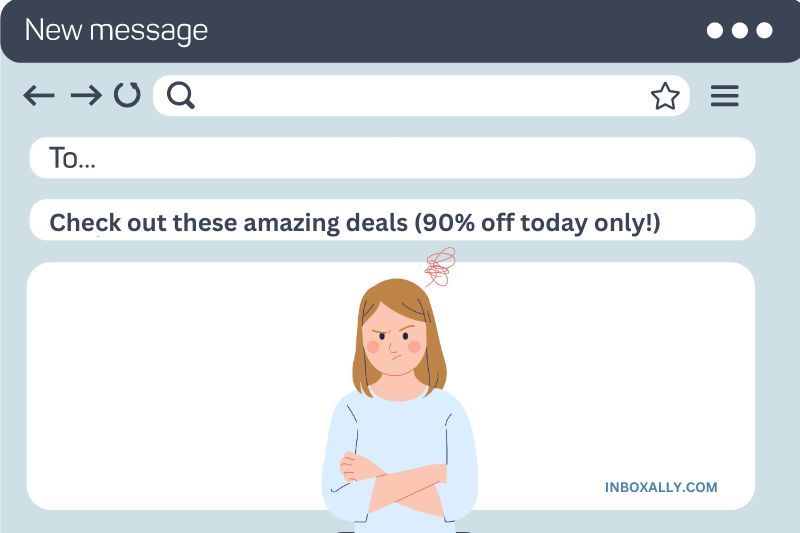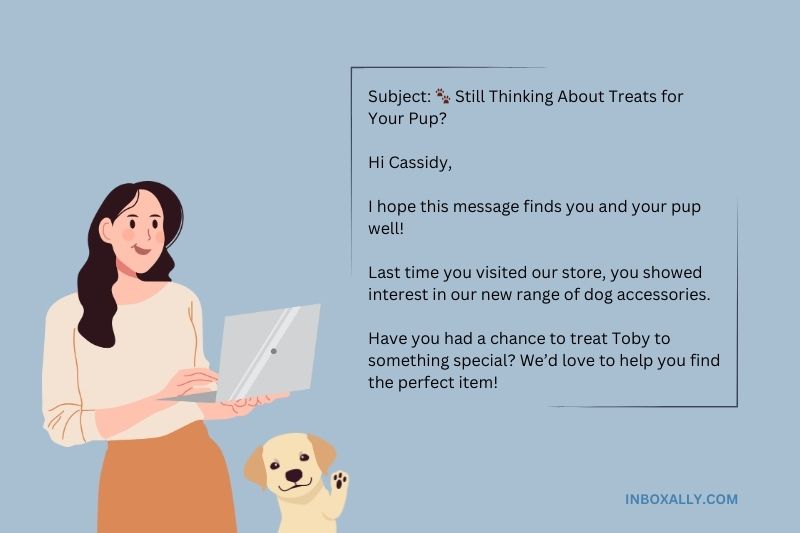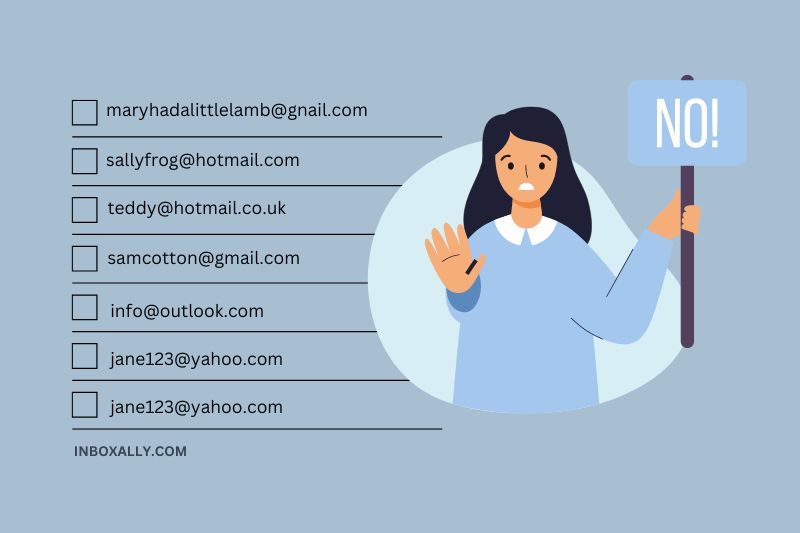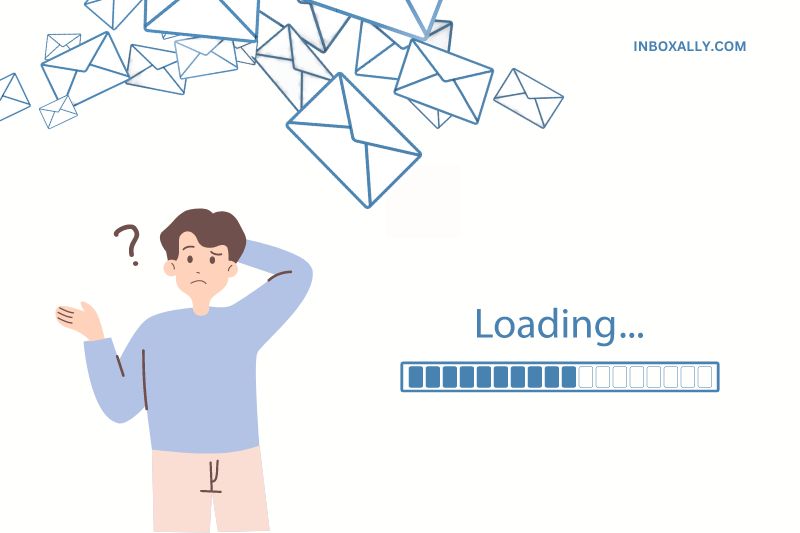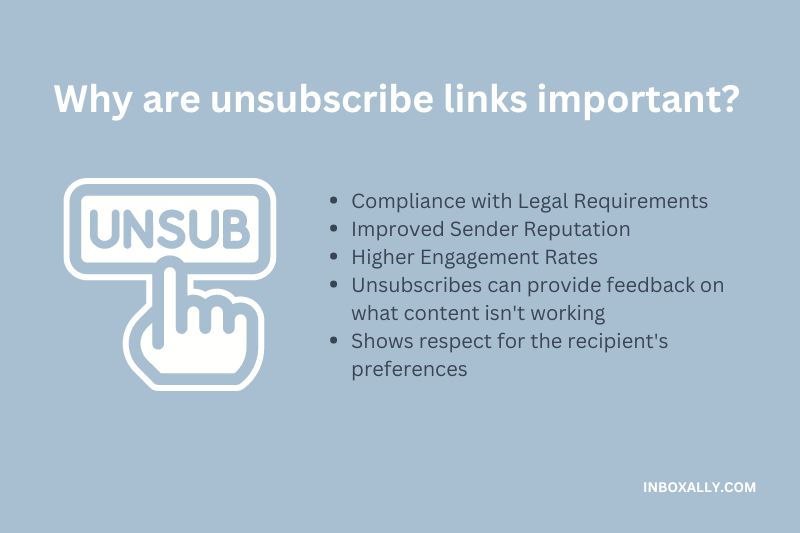We at InboxAlly know from experience the impact email marketing can have on businesses. However, we also know that sending mass emails is not automatically successful. You may find your emails landing in the spam folder instead of the inbox! What a huge waste of energy and disappointment when you look at the delivery reports.
So, to help you use bulk email in the most efficient way possible and grow your business, we’ve written an in-depth guide on how to send mass emails without landing in spam.
Bulk email marketing enables you to reach a large audience instantly. With a single campaign, you can communicate your message to a wide range of recipients, increasing your brand’s exposure and fostering engagement with your target audience.
Done right, the payoff can be huge, with an ROI that far exceeds all your other marketing channels!
How to Send Mass Emails Without Spamming
Below is a checklist of 20 potential reasons your emails may be marked as spam. We encourage you to go through the list one at a time to make sure you’ve covered all your bases.
When you’ve made the needed changes, use our free email checker to see if your email now passes the no-spam test.
1. Clean Your Email List
Proactive email scrubbing (removing inactive contacts) is important to any successful email marketing campaign. We hear you: It takes a lot of effort to get these email addresses, and now we’re telling you to remove contacts?
Yes, because senders with high open rates and clicks look more trustworthy to ISPs (Internet Service Providers). But unengaged contacts are bad for your sender’s reputation. And a bad rap with ISPs means your emails will continue to be classified as junk.
Another benefit of cleaning your email list, aside from avoiding landing in a spam folder, is that it reduces your bounce rate – the percentage of email addresses in the subscriber lists that could not receive your email because it was returned by the mail server.
Ready for a good clean? Great! Then start by removing the following from your list:
![]()
Keep your reputation intact. InboxAlly boosts your deliverability by mimicking real-world engagement and sending positive signals to internet service providers so your messages reach the inbox when and where they need to! Go here to learn more.
2. Consider the Technical Factors
In February 2024, Gmail and Yahoo mandated that bulk senders adopt strict DMARC policies for all mass mail campaigns exceeding 5,000 daily recipients. However, some marketers have reported persistent issues with Yahoo emails bouncing back, often due to authentication misconfigurations or domain reputation concerns. [1] Here’s what you need to set up:
- DMARC (Domain-based Message Authentication Reporting and Conformance)
Additionally, failing to comply with these updated authentication standards can result in Yahoo blocking emails and preventing messages from reaching inboxes and reducing overall deliverability rates. Ensuring your SPF, DKIM, and DMARC settings are properly configured is crucial for maintaining inbox placement and avoiding spam filters.
DMARC is an open technical specification that authenticates emails by aligning DKIM and SPF mechanisms. By putting DMARC in place, you can fight email spoofing, phishing, and business email compromise.
Related: SPF, DKIM, and DMARC explained
DKIM (Domain Keys Identified Mail)
This email authentication technique allows the recipient to determine whether the email is really sent by the domain owner. As the email sender, you can add a digital signature to your email or the message’s header. Whenever the recipient’s system has determined that the email contains a valid DKIM signature, it will then be allowed into the inbox.
SPF (Sender Policy Framework)
This is another email authentication method to prevent spammers from sending messages as if they came from your domain. When your email domain is protected by the SPF framework, the possibility of your bulk emails getting blacklisted by spam filters is greatly reduced.
3. Avoid Misleading Subject Lines and Test Them
Some marketers use false or enticing subject lines to get their recipients to open their emails. However, this is a shady marketing practice. A survey conducted by Litmus showed that 54% of participants have felt deceived, tricked, or cheated into opening a promotional email because of a misleading subject line.
So, to avoid setting yourself up for spam complaints, refrain from words that mislead or seem too promotional. Google’s algorithms now place more weight on transparency, penalizing emails with excessive capitalization or bait-like phrasing.
You should also test your email subject line, especially when sending bulk emails. Some words can alert spam filters when used in subject lines. For instance, words like “100% off,” “free,” “limited time,” “instant,” “order limited,” and “dollars”.
Ready to optimize your emails even better? InboxAlly can help you test and improve your emails to bypass spam filters on every email campaign! Learn more here.
4. Make Sure Your Email Looks Professional
It’s easy for bulk emails to be mistaken for malicious activity, like phishing, which can lead to various problems. Many recipients could choose to ignore or delete the message.
So make sure your email looks professional. You probably already recognize typical spam, such as typos, strange links, and fuzzy images, and know to avoid them.
A few tips to make sure your email is seen as legitimate include investing in a good email design (well-placed images and text plus a modern layout), not using suspicious attachments and links, and avoiding obvious grammar and spelling errors.
Links are important, too! However, links that point to questionable resources will be blocked. That’s why you need to avoid using shortened links or placing links in the subject line—they might be interpreted as fraudulent.
The same is true of the documents and attachments. They will likely flag it as spam if it contains files with dubious titles, archives (especially password-protected ones), or links to free file-hosting facilities.
5. Use Double Opt-In
A double opt-in happens when a user subscribes to an email or newsletter and then needs to click on a link sent to them to confirm their subscription. What’s the purpose of this confirmation method?
It reduces spam addresses in your list since any bots that we’re able to sign up for in your email marketing list can’t make it to your list after the confirmation. It also protects your sender’s reputation and helps you avoid any spam traps.
Moreover, this added step shows that the recipient is really interested in the topic or business. Eventually, it leads to greater engagement and better results for your campaign.
6. Take Care of the Follow-Up
Having a steady flow of communication with those on your list is important. But it doesn’t mean you send emails just for the sake of sending them.
Offer relevant, engaging, and valuable follow-up content to avoid being marked as spam. Avoid massive email blasts; rather, space your emails evenly to remind your customers that you are there.
Why are follow-up emails important? There are many reasons, but one that stands out is that they increase conversion. People are busy, and there’s a chance your first email could be lost in the inbox with hundreds of other emails. But your follow-up email could be the one that piques their interest.
Consistency is key: Maintaining a consistent sending pattern is essential to avoid triggering spam filters. Sending sporadic or irregular bursts of emails may raise suspicion and result in deliverability issues. Instead, aim for a steady and predictable sending frequency.
7. Pay Attention to Inactive Users
We’ve mentioned this earlier, and we’ll highlight it again: dormant subscribers can damage your sender’s reputation and will also influence your email deliverability rate. If you’ve noticed that some of your subscribers are no longer clicking, opening, or reading your bulk emails, you should act upon it.
Our suggestion is you launch a re-engagement campaign first. But how can you evaluate who to contact?
Start by identifying subscribers with the least risk and most value: This involves analyzing your email list to determine which inactive subscribers previously had high engagement rates or high transactional activity. These subscribers are considered valuable because they have shown a strong interest or investment in your products or services in the past, and they pose less risk in terms of affecting your email deliverability rates negatively.
Another strategy is to add a short survey to find out why your subscribers have stopped engaging with your emails or have gone quiet. Remember, feedback is the key to improvement.
8. Watch Out For Spam Traps
Spam messages accounted for over 46.8 percent of e-mail traffic in December 2023. [2]
Internet Service Providers are using spam traps as their first line of defense against spammers. These spam traps are actual email addresses that are created specifically for tracking and identifying spammers. They are never used for communication and are typically hidden on websites where only a harvesting tool (used by spammers to collect email addresses) would find them.
Another type of spam trap is a “Typo Trap”. These addresses are intentionally created with common typos (e.g., “gnail.com” instead of “gmail.com”) to catch senders who are not validating email addresses before sending mail.
If your bulk emails reach such an address, your ISP will automatically flag you as a spammer. In effect, your IP address and “from domain” will be blocked, and your deliverability rate will plummet. Yikes.
What’s even scarier is that it may take up to one year for you to restore your good sender reputation! So how do you avoid them? Validate each email address as you collect them and never, ever buy email lists, as they are more likely to include spam traps.
9. Fix Field Errors and Typos
Field errors, typos, and grammatical errors can hurt your email campaign. A single error can make your email look unprofessional and sloppy, which can be a red flag to ISPs.
When a consumer may be wary of phishing or spam, a misspelled word can mean they don’t open your mail at all.
As for field errors, we mean avoiding bounces by making sure your list does not contain user subscribe typos where @gmail is spelled @gmaoil or @hotmail is not @htmail. Ensure that the first and last name fields are properly mapped and not empty. If you have any duplicate contacts, clean those up before they reach your subscribers’ inboxes twice.
10. DON’T SHOUT AT YOUR RECIPIENTS (Avoid Using Upper Case)
Avoid using ALL capital letters in your emails, even if you want to highlight or emphasize your message. Doing so is rude and may be interpreted as if you’re shouting (especially when used in the subject line).
Instead, craft an inquisitive or witty subject line. A study showed that subject lines that end with a question mark achieved a higher open rate than those that use exclamation points.
With that, you probably get by now that using multiple exclamation points, especially in your subject line, only ends up being spammy to the ISPs and the receivers.
11. Craft Email Copy That Does Not Trigger Spam Filters
To avoid landing in spam, craft an email copy that appeals to your subscribers and does not flag the rigorous spam filters. How is this best handled?
The simple answer is that everything in the email matters. The images, the embedments, the attachments, the design, and the font. All of these are being scrutinized by spam filters. So, keep the email on point and as relevant as possible.
Another tip to craft an email that reaches your subscribers’ inboxes is to achieve a balance of text and image, as discussed below.
Once you think you have the email copy dialed in, make sure to test it using one of the many free spam check tools, and then keep iterating until it’s perfect.
Related: Why Are My Emails Going to Spam and How to Avoid the Spam Folder
12. Limit Rich Media Content
In your email marketing campaign, it is best to assume that a majority of those on your list can’t view rich media content, like video embeds. With that, limit putting them in your emails.
Let’s say you insert rich media content in your email, and it won’t work properly or show up at all. Your email design will appear messy and sloppy to your clients, which can make your email spammy and damage your credibility.
Even if the media is important to your bulk emails, put such on your website instead and insert a link to it on your email copy. Try using an animated GIF instead, as this is a much more reliable format for email.
Alternatively, an image with a play button overlay is a great way to show that you have video available. Once clicked, the link will lead your clients to the video posted on your site. Moreover, avoid using dynamic scripts and JavaScript as they could also alert the spam filters.
We also don’t encourage emails that consist entirely of photos. It may show up as incomplete or empty if the email recipient has turned off the email images. This is the reason why some email marketers prefer to adopt the 80:20 text-to-image ratio or put an “alt text” in their images.
13. Offer Both HTML and Plain Text Email
Take time to create both the HTML and plain text versions of your email. The HTML email is what you typically see from other organizations and businesses. They contain colors, images, and formatting and usually start with an email template.
On the other hand, plain text emails are just exactly what they sound like. No bells or whistles, just plain text without buttons, formatting, or graphics.
The reason why you need both of these versions is that you can appeal to different people and establish your legitimacy with Internet Service Providers. Most modern email marketing tools and services provide the option to create both versions simultaneously. When the email is sent, the email system determines which version to display based on the recipient’s email client settings or preferences.
14. Avoid Attachments
Some email marketing providers don’t even allow attachments because they’re more security-conscious. And honestly, sending a file that contains attachments to thousands of recipients takes longer than just a simple email.
The whole process makes the email more likely to end up in the spam folder. If you really need to share a file, why not use a free file-sharing service, such as Dropbox, and include that link in your email instead?
15. Tone Down Colors and Fonts
The visual appeal of your email plays an important role in user engagement, but it’s essential to use colors and fonts wisely to avoid spam filters.
Overly bright or inconsistent color schemes can be jarring to the recipient and may signal spam to email filters. Similarly, using multiple font types and sizes can make your content appear disorganized and unprofessional, which can also raise red flags with spam detection systems.
Limit yourself to two or three colors and ensure they provide enough contrast to make the text easy to read. Choose standard, web-safe fonts such as Arial, Georgia, or Times New Roman. These fonts are universally supported across email clients and are less likely to cause issues with rendering. Avoid using overly decorative fonts that might not display consistently for all recipients.
16. Include a Prominent Unsubscribe Link
Google now requires a one-click unsubscribe link for promotional emails. Complex or multi-step unsubscribe processes will eventually make your emails flagged as spam.
Unsubscribe links are aslo a legal requirement under laws like the CAN-SPAM Act in the United States and the GDPR in Europe. These regulations mandate that recipients must have an easy way to opt out of receiving future communications.
When subscribers find it difficult to unsubscribe, they are more likely to mark your emails as spam, which can hurt your sender reputation and impact deliverability rates across your entire email list.
Moreover, making the unsubscribe process straightforward can provide indirect benefits to your campaign. It allows you to maintain a cleaner, more engaged mailing list by naturally filtering out recipients who are no longer interested in your content.
Remember, a smaller, more engaged audience is far more valuable than a large, disinterested one.
17. Use a Dedicated IP
The next solution to send bulk emails without landing in spam is to use a dedicated IP address. A dedicated IP address will only be used by your company’s or business’ account with your marketing emails.
If you send transactional emails, keep those on a different IP or pool. Just in case something goes wrong on the marketing side, you will limit the disruption of your business.
Remember, when moving to a dedicated IP, it is best to warm up your IP so the ISPs can gather data about your email activity and understand that you are not a spammer.
18. Use a Reputable Email Automation/ Marketing Tool
Choose a reputable email service provider to avoid the many pitfalls linked with bulk email sends. With the help of an established email marketing platform, you can take advantage of using relevant sender IP addresses. It helps you with the credibility and recognizability of your email.
For example: Gmail is primarily for personal and low-volume email sending. However, for sending bulk emails, we recommend you use a dedicated email marketing service or an SMTP server that specializes in bulk email delivery for sending mass emails
19. Run Spam Tests Before Sending Your Email
Before you send out your bulk email campaigns, run a spam test first to increase your overall email deliverability. Some marketers form a seed list using the email addresses that belong to their family, co-workers, or friends. You can also find tools that measure inbox placement.
The spam test will not only review your subject line and content but will also check if your domain or IP address is blacklisted.
20. Review Analytics
Our last tip on how to send mass emails without landing in spam is to review your analytics. This helps you track how subscribers interact with email campaigns.
Gather and analyze analytics for every email campaign. Focus on these clickstream metrics: bounce rate, open rate, and CTR.
Understanding these metrics allows you to fine-tune your approach, identify what resonates with your audience, and make informed decisions to improve the effectiveness of your future campaigns.
You Can Find Your Way to the Inbox
By now you should be feeling pretty confident in your ability to send bulk emails and avoid the spam folder.
As long as you follow the best practices listed above, it will generate positive results and bring greater returns on the creativity, time, energy, and money that you have invested in your bulk email campaign.
InboxAlly is your, well, ally in email marketing. We’re here to guarantee your emails will land in the inbox where they should be. By sending out seed emails, and interacting with them as a reader, we improve your sender reputation and increase your deliverability rates. We can’t wait to hear from you.
If your messages are still getting flagged, learning how to prevent emails going to spam in Gmail can help you refine your approach and improve inbox placement
